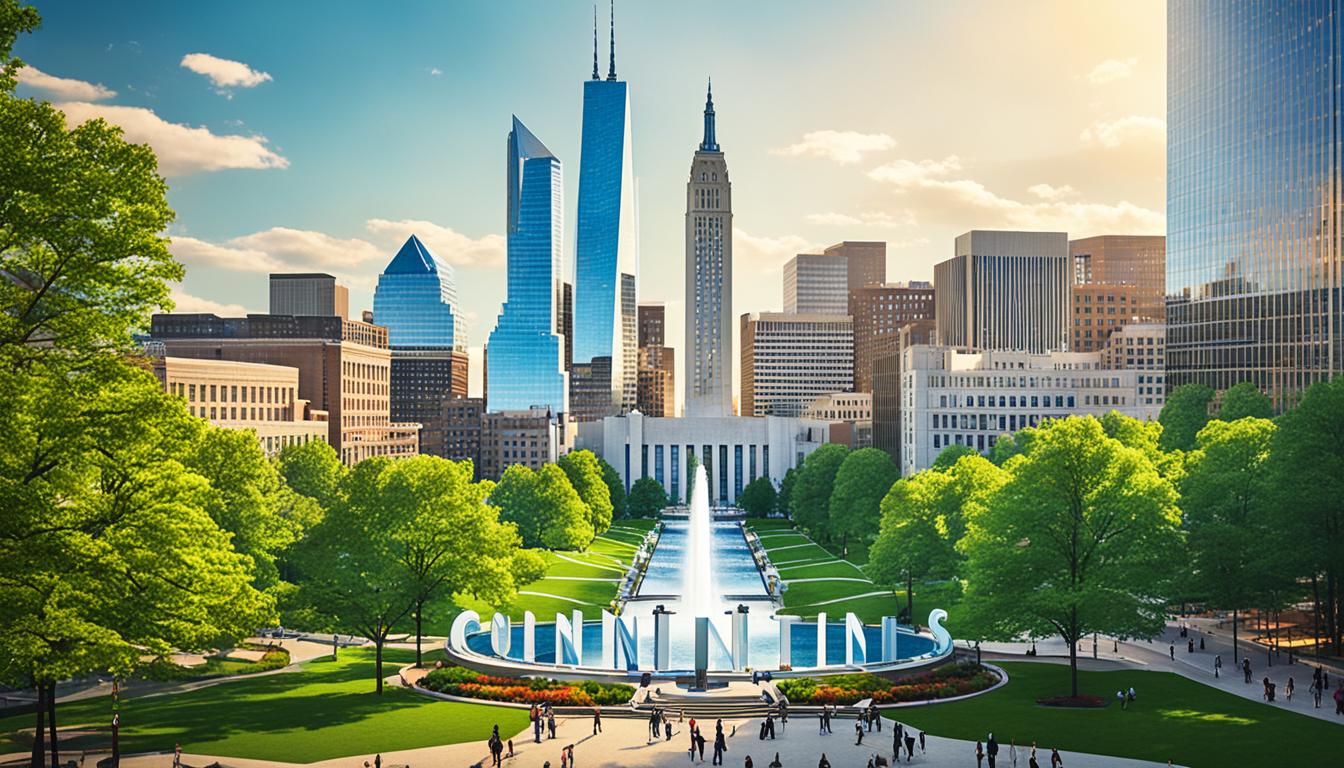After World War II, the United Nations sought a permanent home. Surprisingly, the UN Headquarters almost ended up in Connecticut. A committee formed in June 1945 to find the perfect location.
They proposed “UNOville,” a massive 100-square-mile campus. It would span parts of North Greenwich, Stamford, and North Castle, New York. This ambitious plan aimed to create a global hub for the UN.
UNOville was a grand vision. It included skyscrapers, highways, railroads, and airports. These would support the UN’s operations and staff.
However, the committee kept their talks secret. They didn’t consult the local population about their plans. This lack of openness would later cause problems in choosing the site.
Key Takeaways:
- In 1945, a committee was formed to choose the location for the UN Headquarters
- “UNOville,” a 100-square-mile campus in Connecticut and New York, was proposed
- The project included plans for skyscrapers, highways, railroads, and airports
- Discussions about the Connecticut proposal were conducted secretly, without local input
- The lack of transparency would later hinder the site selection process
UNOville: The Connecticut Proposal for the UN Headquarters
In January 1946, Prescott Bush made a bold announcement. Connecticut proposed to host the UN Headquarters in a campus called “UNOville.” The plan, published in the Greenwich Time, sparked immediate local opposition.

The mega-campus would have displaced up to 1,000 residents. This prospect united locals in a fierce fight to preserve their way of life. The proposal included sites straddling Harrison and Rye.
Architect Le Corbusier designed a bold plan for the headquarters in White Plains. Despite Bush’s enthusiasm, UNOville faced strong resistance from the start.
Many Connecticut residents saw the proposal as a threat to their communities. They feared losing their cherished local character. The grassroots opposition quickly gained momentum.
This set the stage for a heated public debate. Residents weighed the pros and cons of hosting this international institution in Connecticut.
Local Opposition and the Referendum
Westchester residents fiercely opposed the UN headquarters in their county. They worried about its impact on their communities. James D. Hopkins, North Castle’s Supervisor in 1946, led the opposition.
A public referendum was held on February 23, 1946. The UNOville proposal was soundly rejected 5,505 to 2,019. This vote showed the community’s strong stance against hosting the UN.
James D. Hopkins wrote a booklet called “Our Voices Were Heard: The Selection of the United Nations.” It documented the local opposition and Westchester’s role in the UN location decision.
The referendum’s outcome led to dropping the Connecticut proposal. This opened the door for other locations to be considered. It shaped the future of the UN and its famous headquarters.
The UN Headquarters Connecticut Proposal: Aftermath and Alternatives
Greenwich rejected the UN Headquarters proposal. This sparked competition among other U.S. cities. Boston, Philadelphia, and San Francisco vied for the opportunity, but New York City won.
In December 1946, John D. Rockefeller Jr. bought land in Manhattan. He paid $8 million for 16 acres along the East River. His son Nelson convinced him to donate it to the UN.
This generous gift set the stage for the UN’s new home. The location was in the Turtle Bay neighborhood. It would soon become a symbol of global cooperation.
Construction began in 1949. Employees started moving in by 1950. Famous architects like Oscar Niemeyer and Le Corbusier designed the complex. It’s now an iconic landmark in New York City.

Leave a Reply